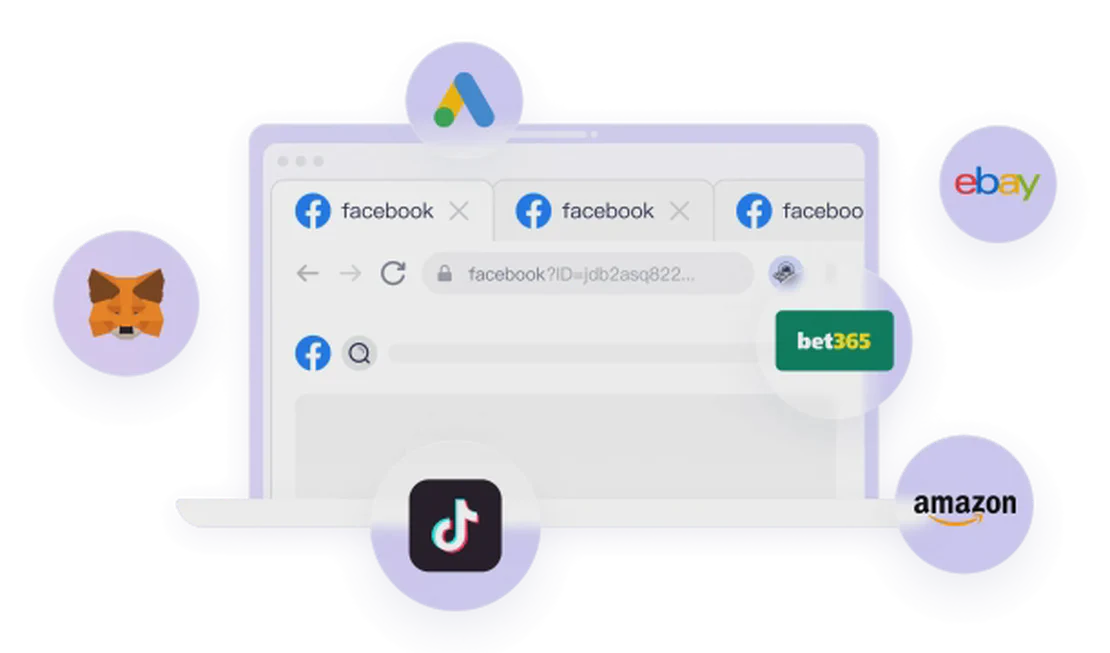10 Questions and Answers About WebRTC Leaks
A WebRTC leak is a common but often overlooked risk to online privacy. This guide will help you understand its principles, risks, and how to prevent it through 10 Q&As.
1. What is WebRTC?
WebRTC (Web Real-Time Communication) is an open-source technology that enables browsers to conduct peer-to-peer (P2P) voice/video calls and data sharing directly, without needing any plugins or software. It is widely used in applications like online meetings, video chats, and file transfers.
2. What is a WebRTC leak?
A WebRTC leak occurs when a website can discover your real public and local IP addresses via WebRTC technology, even if you are using a VPN or proxy to hide them. This happens because WebRTC needs to exchange the real IP information of both parties to establish a P2P connection, potentially bypassing the VPN’s protection.
3. Why is a WebRTC leak a serious privacy risk?
Your IP address is your digital address on the internet. Exposing it can reveal your geographic location and ISP information, making your online activities easier to track. For users who value anonymity, a WebRTC leak renders the protection offered by a VPN ineffective.
4. Can a WebRTC leak happen even if I use a VPN?
Yes, it’s very likely. Many VPN clients do not block WebRTC requests by default because these requests are initiated by the browser and may travel outside the VPN’s encrypted tunnel. Therefore, your real IP address is still at risk of being exposed.
5. How do I use this tool to check for a WebRTC leak?
It’s very simple. The tool runs automatically when you visit the page. If the “Public IP Address” field displays your real IP address (not your VPN’s IP), it means you have a WebRTC leak.
6. What’s the difference between “Public IP” and “Local IP” in the test results?
- Public IP: This is the unique IP address assigned to you by your Internet Service Provider (ISP) to identify you on the internet. This is the most critical piece of information that can be leaked.
- Local IP: This is your address within your local network (like home or office Wi-Fi), typically starting with
192.168.x.xor10.x.x.x. While the risk is lower, it can still reveal information about your network structure.
7. How can I fix a WebRTC leak?
A common method is to disable WebRTC in your browser or install an extension to block WebRTC requests, such as “WebRTC Leak Prevent” or “uBlock Origin.” However, be aware that disabling WebRTC might break websites that rely on it (like Google Meet).
8. Will disabling WebRTC affect my normal browsing?
It might. Many modern web applications, especially online communication tools, rely on WebRTC. Disabling it completely may prevent you from using these services. A more flexible solution might be more suitable.
9. Are all browsers vulnerable to WebRTC leaks?
Mainstream browsers like Chrome, Firefox, Opera, and Edge have WebRTC enabled by default and are therefore at risk. Some privacy-focused browsers (like Brave) or specially configured browsers offer protection by default.
10. What is the relationship between a WebRTC leak and browser fingerprinting?
A WebRTC leak is part of a browser’s fingerprint. Websites identify you not just by IP but by a combination of information, including your device’s fonts, screen resolution, browser plugins, and Canvas fingerprint. The IP address from a WebRTC leak is a very critical and unique part of this fingerprint.
The Ultimate Solution: Use the FlashID Fingerprint Browser
While disabling WebRTC can partially solve the IP leak problem, it doesn’t stop websites from tracking you through other fingerprinting techniques. For users who need to manage multiple accounts, conduct international marketing, or highly value online anonymity, a comprehensive and professional tool is essential.
FlashID is a professional fingerprint browser that provides you with an all-in-one privacy protection solution.
- Intelligent WebRTC Control: FlashID allows you to flexibly configure WebRTC’s behavior in each browser profile. You can either disable it completely or have it replaced intelligently based on the proxy IP, ensuring privacy without breaking website functionality.
- Comprehensive Environment Spoofing: Beyond WebRTC, FlashID generates a unique and authentic browser fingerprint for each profile, including Canvas, fonts, timezone, language, and more. This makes each account appear as if it’s running on a separate computer, fundamentally preventing account association.
- Simplified Multi-Account Management: You can easily create and manage hundreds of independent browser environments on a single device, each with its own cookies, cache, and fingerprint. It’s the ideal tool for e-commerce, social media marketing, and advertising.
With FlashID, you no longer need to worry about WebRTC leaks or any other form of online tracking, allowing you to conduct your business safely and efficiently.
You May Also Like
